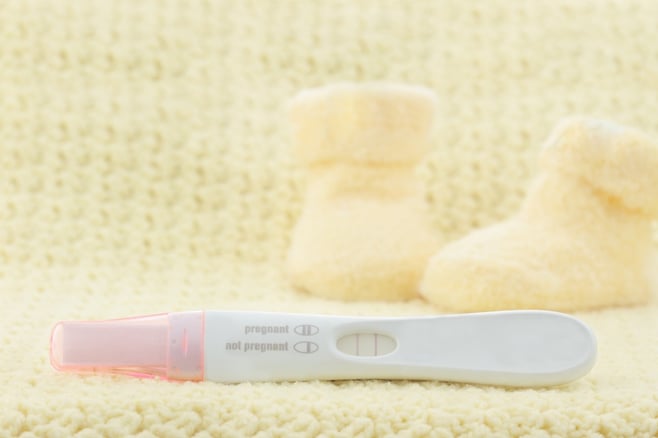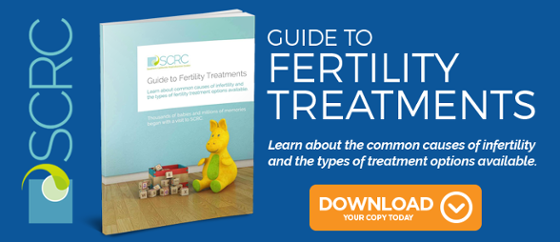
Laparoscopy, also sometimes called “keyhole surgery” is a minimally invasive type of surgery that is often used to investigate or treat fertility issues, though it is also used for other common types of abdominal or pelvic surgery such as an appendectomy, gallbladder removal, or gastric band placement. Because it is so common, and because of its use in reproductive medicine, patients often have questions about how this kind of surgery might affect their chances of getting pregnant. While it’s true that every case is unique, the good news is that it is quite rare for laparoscopic surgery to adversely affect a woman’s fertility. In many cases, it may actually improve the odds of conception. Here’s everything you need to know about having a baby after a laparoscopy.
How is laparoscopy done?
Laparoscopy is generally done under general anesthesia. Depending on the procedure being done, it is often an outpatient surgery, allowing you to go home after a few hours in the recovery room, though in some cases you may need to stay overnight at the hospital. At the time of a laparoscopic procedure, the surgeon makes one tiny incision in the abdomen. A laparoscope is inserted through the incision: this is a thin, lighted fiber optic-tube which contains a camera, allowing the surgeon to see inside your belly. In some cases, microsurgical instruments can also be inserted in this tube, or they may be inserted through a second incision. The abdomen is then gently inflated with gas to allow the surgeon room to see and work. With a clear view of the reproductive organs, problems can be diagnosed and surgically repaired.
Laparoscopic surgery is much less traumatic for the body than traditional types of surgery with large incisions. Patients experience less pain, discomfort, and dramatically quicker recovery times.
How is laparoscopy used in the field of fertility?
Many women have trouble conceiving due to “pelvic factor infertility” which means that there is a physical problem within her pelvis and reproductive tract which is keeping her from getting pregnant. There are many different issues which can cause pelvic factor infertility. Scar tissue from infections, injuries or surgeries, or problems like endometriosis, ovarian cysts, polyps or fibroids in the uterus can all affect how a woman’s reproductive system functions. Laparoscopy can be used to diagnose issues that often cannot be seen on an ultrasound. In some cases, the doctor may be able to treat or repair the problem then and there during the procedure.
Will a laparoscopy hurt my chances of getting pregnant?
For some women, who have undergone a laparoscopy to remove fibroids or endometriotic lesions, repair a hydrosalpinx, unblock a fallopian tube, or reverse a tubal ligation, the surgery actually increases the chances of getting pregnant. However, there are some cases where laparoscopy may affect your ability to conceive.
- Recovery time.
If you are trying to conceive naturally, undergoing a laparoscopy can disrupt your conception timeline as you may need a few weeks to recover after the surgery. A small amount of pain and bloating is usual in the days following the procedure, and you will need to give your body time to rest and heal. Generally, doctors recommend that you wait until your incision is fully healed before resuming intercourse (as well as other physical activities such as exercise) which may take anywhere from 3-5 days to several weeks. Listen to your body: get lots of rest and good nutrition, take care of your incision site, and if you experience pain during intercourse, stop and give yourself a few more days. If pain continues to be an issue for you, speak to your doctor.
- Scarring.
Any time a woman undergoes pelvic or abdominal surgery of any kind, there is some risk of scarring and adhesions inside the pelvic cavity, though this is less likely with laparoscopy than with other types of surgery with larger incisions such as open procedures. In some cases, the resulting scar tissue may cause difficulty conceiving, for example, if a fallopian tube is damaged. During laparoscopic surgery, the surgeon’s visibility and range of motion are limited, and because they are using tools and a camera instead of their hands, it can be challenging to judge how much force is necessary. This means that the skill and training of your surgeon is extremely important to minimize any adverse side effects, such as internal scarring.
What treatment options are there?
If you are having trouble conceiving and suspect that scar tissue and adhesions may be playing a role, your doctor will investigate with ultrasound or a procedure called a hysterosalpingogram (HSG). This is a special x-ray, where contrast material (dye) is injected through a catheter in the cervix to the uterus as x-rays are taken. This way the doctor can see how the dye flows into the fallopian tubes and whether they are open or blocked. In some cases, the treatment may actually be another laparoscopic surgery. If you choose to undergo another laparoscopy, IVF may be your best course of treatment in this type of situation, as it bypasses the fallopian tubes entirely. After a course of ovarian stimulation with fertility medication, eggs are retrieved from the woman’s ovaries, then mixed with sperm in the lab, and the resulting embryos are then transferred directly into the uterus. IVF success rates for women under 40 with tubal scarring or other types of pelvic-factor infertility are usually excellent, as long as there are no other underlying or complicating infertility factors.
If you have already had a laparoscopic procedure or are expecting to need one, don’t worry too much about it affecting your chances of getting pregnant: this is a rare complication. However, if you are already worried that your history of laparoscopic surgery could be making it harder to conceive, don’t suffer the stress in silence. Talk to your doctor or contact a fertility clinic and let them help you discover what’s going on and talk you through your options.
Share this on social media:





